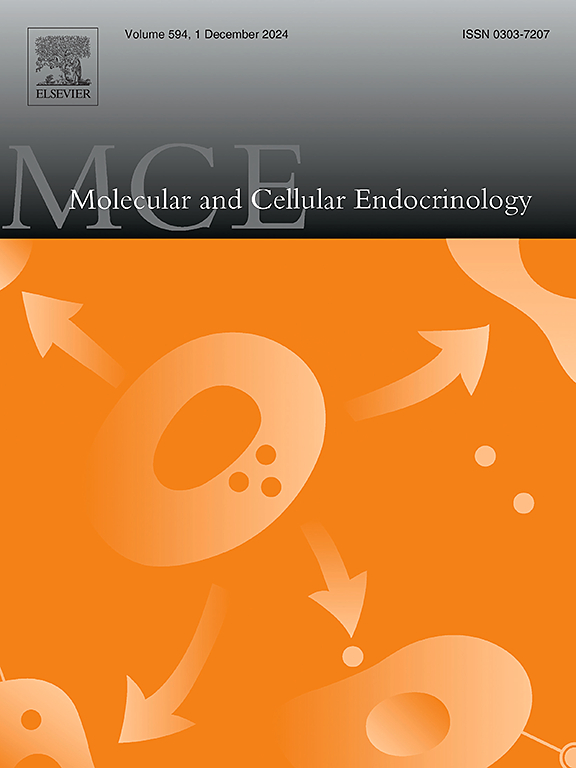Exploring different mechanisms of reactive oxygen species formation in hypoxic conditions at the hippocampal CA3 area
IF 3.6
3区 医学
Q2 CELL BIOLOGY
引用次数: 0
Abstract
Hypoxia can lead to severe consequences for brain function, particularly in regions with high metabolic demands such as the hippocampus. Excessive production of reactive oxygen species (ROS) during hypoxia can initiate a cascade of oxidative stress, evoking cellular damage and neuronal dysfunction. Most of the studies characterizing the formation of ROS are performed in the context of ischemia induced by oxygen-glucose deprivation, thus, the role of hypoxia in less severe conditions requires further clarification. The aim of this work was to identify the major mechanisms of ROS generation and assess flavoprotein autofluorescence changes. For ROS detection, the slices were incubated with the indicator H2DCFDA, while intrinsic FAD-linked autofluorescence was recorded from indicator free slices. All signals were measured under hypoxia, at the hippocampal mossy fiber synapses of CA3 area, which were chemically stimulated using 20 mM KCl. The results suggest that ROS is formed in the mitochondria, during moderate hypoxia. The blockage of mitochondrial complexes I, III and IV with rotenone, myxothiazol and sodium azide, respectively, and of the mitochondrial calcium uniporter with Ru265, led to the abolishment of ROS changes and to an increase of FAD-linked autofluorescence (with the exception of the complexes III and IV). The blockage of the enzyme oxidases NADPH and xanthine oxidase also impaired ROS formation and rose FAD-linked autofluorescence. Thus, the blockage of any of the steps of the process of ROS formation, namely the activation of critical MRC complexes, calcium entry into the mitochondria, or enzyme oxidases activity, ceases the production of ROS.
探讨缺氧条件下海马CA3区活性氧形成的不同机制。
缺氧会对大脑功能造成严重后果,特别是在海马体等高代谢需求区域。缺氧时活性氧(ROS)的过量产生可引发氧化应激级联反应,引起细胞损伤和神经元功能障碍。大多数描述ROS形成的研究都是在氧-葡萄糖剥夺引起的缺血情况下进行的,因此,在较不严重的情况下,缺氧的作用需要进一步阐明。这项工作的目的是确定ROS产生的主要机制,并评估黄蛋白自身荧光的变化。为了检测ROS,将切片与H2DCFDA指示剂孵育,同时在无指示剂的切片上记录FAD-linked固有荧光。在缺氧条件下,用20 mM KCl化学刺激海马CA3区苔藓纤维突触,测量所有信号。结果表明,在中度缺氧时,ROS在线粒体中形成。鱼tenone、粘噻唑和叠氮化钠分别阻断线粒体复合体I、III和IV,以及Ru265阻断线粒体单钙转运体,导致ROS变化的消除和fad -联自身荧光的增加(除了复合物III和IV)。氧化酶NADPH和黄嘌呤氧化酶的阻断也损害了ROS的形成和fad -联自身荧光的增加。因此,ROS形成过程的任何步骤,即关键MRC复合物的激活、钙进入线粒体或酶氧化酶活性的阻断,都会停止ROS的产生。
本文章由计算机程序翻译,如有差异,请以英文原文为准。
求助全文
约1分钟内获得全文
求助全文
来源期刊

Molecular and Cellular Endocrinology
医学-内分泌学与代谢
CiteScore
9.00
自引率
2.40%
发文量
174
审稿时长
42 days
期刊介绍:
Molecular and Cellular Endocrinology was established in 1974 to meet the demand for integrated publication on all aspects related to the genetic and biochemical effects, synthesis and secretions of extracellular signals (hormones, neurotransmitters, etc.) and to the understanding of cellular regulatory mechanisms involved in hormonal control.
 求助内容:
求助内容: 应助结果提醒方式:
应助结果提醒方式:


